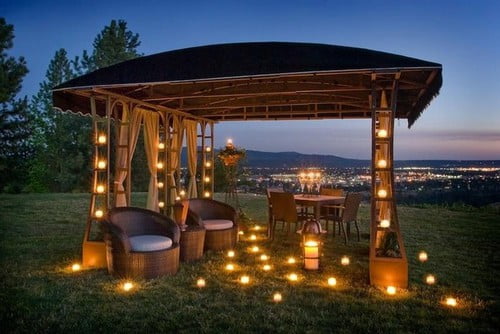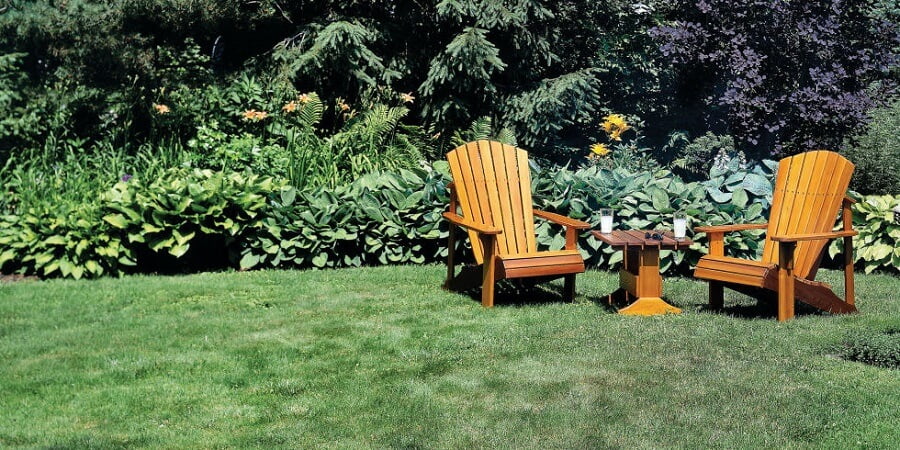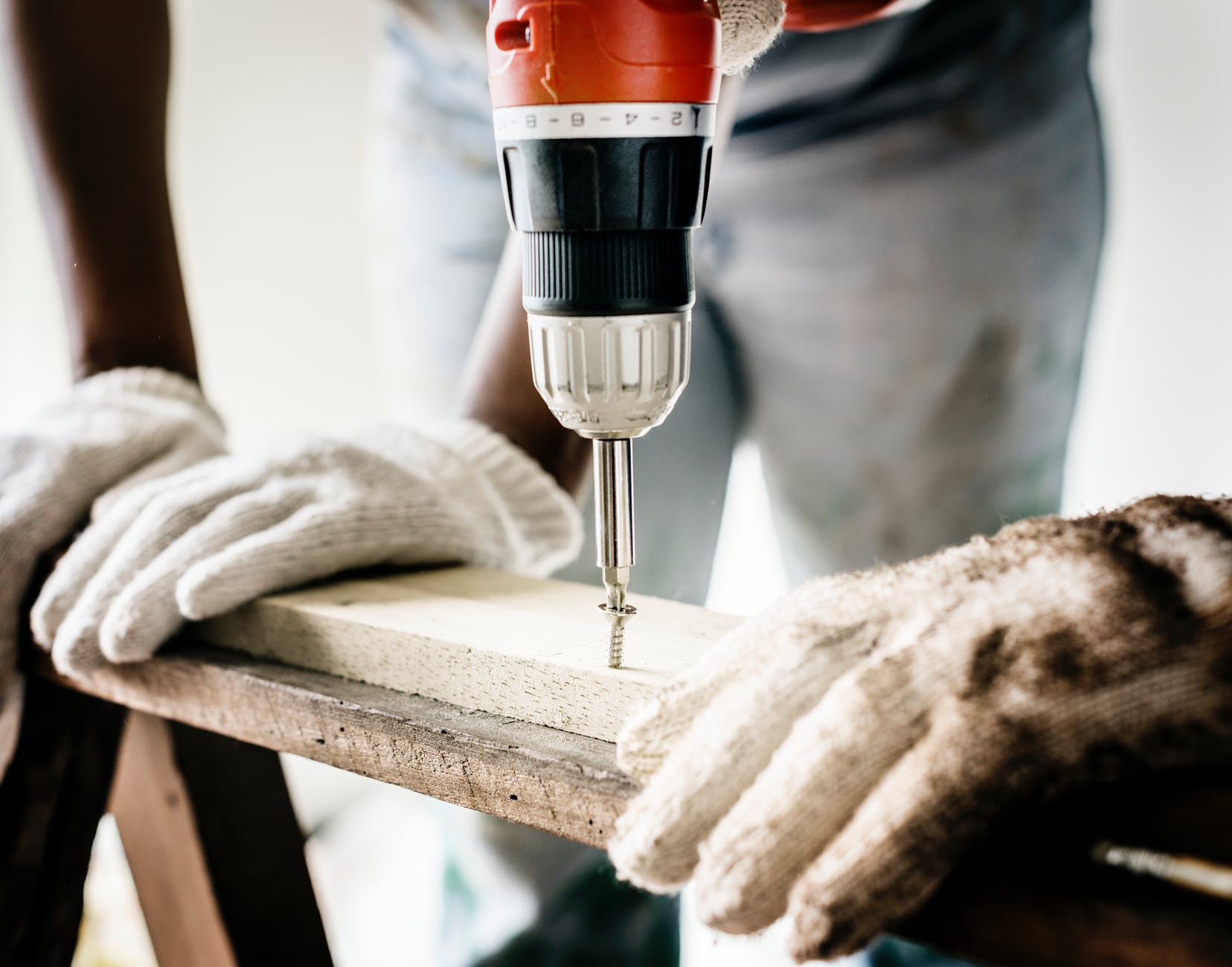Are you tired of being cooped up indoors and craving a refreshing outdoor space to call your own? Look no further! We’ve got the tips and tricks to help you create an ideal outdoor living area that not only adds value to your home but also serves as a perfect spot for relaxation, entertainment, and enjoying the great outdoors.
With a little planning and creativity, you can transform your backyard or patio into an inviting oasis that suits your needs and lifestyle.
In this article, we’ll walk you through the essential steps in designing your dream outdoor living space. From assessing available space and determining desired functionality to selecting comfortable furniture and incorporating landscape design elements – we’ve got it all covered.
Plus, we’ll share innovative ideas for adding shade, enhancing privacy, creating focal points with fire pits or water features, choosing décor and accessories, and establishing a maintenance plan to keep your new haven looking its best.
So let’s dive in together as we uncover the secrets to crafting an enchanting outdoor sanctuary right in your own backyard!
Assessing Your Available Space
So, you’re ready to transform your outdoor area into a cozy haven, but first let’s take a look at the space you have to work with.
Assessing your available space is crucial for creating an outdoor living space that feels inviting and functional. Start by measuring the dimensions of your yard or patio, taking note of any obstacles or unique features that may influence your design decisions.
Next, consider how you want to use this newly transformed space. Do you envision hosting dinner parties under the stars, lounging around a fire pit with friends, or simply having a quiet place to relax and enjoy nature?
By identifying your desired activities and purpose for the outdoor living area, you can better plan the layout and furniture arrangement that will best serve those needs.
Don’t forget about factors such as sunlight exposure and wind patterns when planning your outdoor oasis. This will help ensure that your space is comfortable throughout the day and evening hours.
By considering all these aspects during the assessment stage, you’ll be well on your way to creating a beautiful, functional outdoor living space tailored specifically to suit your lifestyle and preferences.
Determining Your Desired Functionality
Now that you’re ready to dive into designing your perfect outdoor oasis, let’s figure out exactly what functionality you want to achieve in this space. Your desired functionality will greatly impact the design and layout of your outdoor living space.
To determine what you want from your outdoor area, take some time to think about how you envision yourself and your family using the space.
Entertaining:
- Hosting dinner parties or casual gatherings
- Space for a grill or outdoor kitchen
- Plenty of seating options for guests
Relaxation:
- Quiet reading nook with comfortable seating
- Hammock or daybed for lounging
- Soothing water feature or garden area for meditation
Recreation:
- Open lawn space for playing sports or games with kids
- Dedicated area for a swimming pool, hot tub, or fire pit
- Space for outdoor hobbies like gardening or woodworking
Keep in mind that it’s possible to incorporate multiple functionalities into one cohesive design, so don’t feel limited by choosing just one primary purpose.
Once you have a clear vision of your desired functionality, use this as a guiding principle when selecting elements such as furniture, hardscape materials, and plants. By ensuring all aspects of your outdoor living space come together with a specific purpose in mind, you’ll create an inviting and functional environment that truly enhances your home and lifestyle.
Selecting Comfortable and Durable Furniture
Selecting comfortable and durable furniture is crucial when designing your outdoor oasis, as it plays a significant role in the overall look and feel of the space. The right furniture can transform your outdoor living area into an inviting extension of your home, perfect for relaxation, dining, or entertaining.
Start by considering the functionality of your space and choose pieces that cater to those needs while also providing comfort and style. Opt for weather-resistant materials such as aluminum, teak, wrought iron, or synthetic wicker to ensure longevity.
When selecting comfortable seating options for your outdoor living area, consider incorporating a mix of seating types like lounge chairs, sofas, benches or even hammocks to accommodate various activities and preferences. Make sure you include cushions made from water-resistant or quick-drying fabric materials that can withstand the elements while still being soft and cozy. Choose colors and patterns that complement both the surrounding landscape as well as other design elements in your space to create visual harmony.
As you finalize your selection of durable furniture pieces for your outdoor retreat, don’t forget about additional accessories such as side tables or ottomans that can enhance user experience by providing extra surface areas for drinks or snacks. Moreover, invest in quality protective covers to shield furniture against harsh weather conditions when not in use.
By carefully considering each element of comfort and durability within your chosen furnishings, you’ll successfully create an inviting outdoor living space where family members and friends alike will want to gather all season long.
Incorporating Landscape Design Elements
Incorporating landscape design elements into your outdoor oasis not only enhances its visual appeal but also helps to create a seamless flow between indoor and outdoor spaces.
With thoughtful planning and the right combination of plants, hardscape materials, and architectural features, you can effortlessly transform your backyard into an inviting extension of your home. Consider the following tips as you begin to incorporate landscape design elements into your outdoor living space.
Choose plants that complement the style of your home: Selecting plants with colors, textures, and forms that harmonize with your home’s architecture will help create a cohesive look. For example, if you have a modern home, opt for sleek ornamental grasses or sculptural succulents.
Create focal points: Incorporate eye-catching elements such as water features, fire pits, or sculptures to draw attention and serve as conversation starters in your outdoor living space.
Use hardscape materials to define spaces: Utilize various paving materials like flagstone or decomposed granite to distinguish different areas within your landscape design – such as dining areas, lounging spots or play zones.
Add vertical interest: Build structures like pergolas or arbors for climbing vines and use tall plantings like trees or shrubs to provide privacy while adding visual interest at various heights.
As you continue to refine the details of your landscape design plan, remember that creating an enchanting outdoor living space is all about striking a balance between practicality and aesthetics.
Think about how each element will enhance both the beauty and functionality of the area while also considering factors such as maintenance requirements and climate suitability. By incorporating these considerations along with our tips above on choosing complementary plantings, creating focal points, defining spaces through hardscaping materials and adding vertical interest – you’ll soon have an impressive outdoor living space that perfectly complements your lifestyle and reflects your personal taste!
Adding Shade and Weather Protection
To fully enjoy your outdoor oasis, it’s essential to consider shade and weather protection solutions that enhance both comfort and style. Adding shade and weather protection to your outdoor living space not only makes it more enjoyable during hot summer days or unexpected rain showers but also adds an element of visual appeal.
There are numerous options available to suit various preferences, from traditional patio umbrellas and retractable awnings to more innovative solutions such as sail shades and pergolas. One popular option for adding shade and weather protection is a pergola. This versatile structure can be customized in size, shape, materials, and design to create the perfect focal point for your outdoor living space.
Pergolas can be adorned with climbing plants like ivy or wisteria for a natural look or fitted with retractable canopy covers that provide flexible sun and rain protection. A well-designed pergola can transform your outdoor area into a beautiful extension of your home while providing shelter from the elements.
Another innovative solution is incorporating sail shades into your outdoor living space design. These stylish fabric structures are available in various shapes, sizes, colors, and materials that allow you to create a unique look tailored to your personal style. Sail shades offer excellent UV protection while allowing air circulation for added comfort on warm days.
They can be easily installed using tensioned cables or poles, making them a versatile option for any backyard layout. By exploring different shade solutions such as pergolas, sail shades, umbrellas, or awnings, you will ensure maximum enjoyment of your outdoor space regardless of the weather conditions while adding an extra layer of sophistication and charm to its overall appearance.
Lighting Design for Ambiance and Safety
After you’ve considered adding shade and weather protection to your outdoor living space, it’s time to focus on another essential element: lighting design. The right lighting can create a warm and inviting ambiance while also ensuring the safety of your family and guests as they navigate the area.
In this section, we’ll explore some tips for designing an effective lighting plan that balances both ambiance and safety.
To create a cozy atmosphere in your outdoor living space, consider incorporating various types of lighting sources. For example, use string lights or lanterns to add a soft glow around seating areas or pathways. You can also install accent lights to highlight specific features such as plants, sculptures, or water features. Additionally, consider using dimmable LED lights that allow you to adjust the brightness according to your mood or the time of day.
Remember that less is often more when it comes to creating an intimate setting – avoid over-lighting the space so that it doesn’t feel too bright or sterile.
While ambiance is important, don’t forget about safety when planning your outdoor lighting design. Ensure there is adequate illumination along walkways and steps to prevent accidents during nighttime gatherings. Motion-sensor lights are a great option for these areas since they only turn on when needed, conserving energy while still providing security.
Also, be mindful of any potential tripping hazards caused by cords or fixtures – opt for solar-powered options whenever possible to eliminate the need for extension cords running across your yard.
By carefully considering both ambiance and safety in your lighting design plan, you’ll create an enchanting outdoor living space where everyone can relax and enjoy themselves with peace of mind.
Creating a Focal Point with a Fire Pit or Water Feature
A well-designed fire pit or water feature can transform your outdoor living area into an inviting oasis, providing warmth and tranquility for all to enjoy. Creating a focal point with either of these elements not only adds visual interest but also encourages social interaction and relaxation in the space.
When choosing between a fire pit or water feature, consider the size of your outdoor area, the desired ambiance, and your personal preferences. If you’re looking to create a cozy atmosphere where friends and family can gather around for conversation and warmth on cool evenings, a fire pit is an ideal choice. There are various styles available, from traditional wood-burning options to modern gas-fueled designs that offer more control over flame intensity.
When selecting the perfect spot for your fire pit, make sure there’s ample seating nearby and consider wind patterns to ensure smoke doesn’t become an issue. Additionally, always follow local regulations regarding open flames in residential areas.
On the other hand, if you prefer a serene setting that promotes relaxation and contemplation, a water feature might be more fitting for your outdoor living space. The soothing sounds of flowing water can help drown out unwelcome noises from neighboring properties while also attracting birds and other wildlife to visit your garden. Water features come in various forms such as fountains, ponds, or even small streams meandering through rocks and plants; choose one that complements the overall design of your outdoor area.
By incorporating either a fire pit or water feature into your landscape design plan, you’ll elevate the look-and-feel of your outdoor living space while creating an unforgettable focal point for all who visit it.
Enhancing Privacy and Enclosure
Enhancing privacy and enclosure in your outdoor living space is key to achieving a cozy, intimate atmosphere where you can truly relax and enjoy the company of friends and family. You don’t need to build high walls or fences all around; there are many creative ways to make your space feel private and enclosed without compromising aesthetics.
In this section, we’ll discuss some tips on how to enhance privacy in your outdoor living space.
Use plants strategically: Tall plants like bamboo or tall grasses can act as a natural screen, while trees with dense foliage can create shade and barrier from neighbors’ view.
Install a pergola or gazebo: These structures not only provide shade but also help define your outdoor living area, making it feel more secluded.
Add curtains or drapes: Outdoor curtains made of weather-resistant fabric can be installed around a patio or pergola for added privacy and an elegant touch.
Incorporate decorative screens or panels: Decorative screens made of metal, wood, or even laser-cut plastic can be used as partitions between different areas of your garden or along the perimeter for added privacy.
To maintain the balance between privacy and openness in your outdoor living space, consider using a combination of these ideas. For instance, you could plant tall grasses along one side of the patio while adding a decorative screen on another side.
This way, you’ll have enough enclosure for intimate gatherings without feeling completely closed off from the rest of the garden. Remember that enhancing privacy doesn’t mean shutting out nature; it’s about creating cozy nooks within your outdoor oasis where you can unwind in peace.
Incorporating these tips into your design will surely help enhance privacy in your outdoor living space without sacrificing style. By doing so, you’ll create an inviting environment that encourages relaxation and enjoyment with loved ones throughout the seasons. So go ahead – experiment with different ideas until you find what works best for you!
Choosing Outdoor Decor and Accessories
Now that we’ve covered privacy, let’s dive into selecting the perfect outdoor decor and accessories to truly personalize your alfresco haven!
Your outdoor living space should be a reflection of your unique style and taste. As you explore various outdoor living space ideas, consider choosing outdoor decor that complements the existing design elements of your home’s exterior and interior spaces. This will help create a seamless flow between indoor and outdoor areas.
When it comes to decorating your outdoor retreat, think beyond just furniture. Incorporate eye-catching accents such as decorative planters, sculptures, or even a water feature for an added touch of elegance.
Choose durable pieces made from weather-resistant materials to ensure they’ll withstand the elements while still looking great over time. Lighting is another essential aspect of creating ambiance in your backyard oasis; invest in solar-powered lights or string lights to add warmth and charm when the sun goes down.
Don’t forget about textiles – adding cozy cushions, throws, and rugs can make a big difference in transforming hard surfaces into inviting spots for lounging or dining alfresco. Consider using fabrics specifically designed for outdoor use to resist fading and mildew growth.
Additionally, select colors and patterns that either coordinate with or complement your indoor spaces for a harmonious look throughout your entire property. With thoughtful planning and attention to detail, you can easily create an enchanting outdoor living space that reflects your personality while providing endless hours of relaxation and enjoyment throughout the year.
Establishing a Maintenance Plan for Your Outdoor Space
It’s essential to establish a maintenance plan for your outdoor space that keeps it looking fresh and inviting all year round. A well-maintained outdoor living space not only adds value to your property but also enhances your overall enjoyment of the outdoors.
To keep your space in top-notch condition, you’ll need to consider several factors, including maintaining furniture, landscaping upkeep, cleaning surfaces, and addressing seasonal needs. Developing a regular maintenance schedule can help ensure you stay on top of these tasks before they become overwhelming.
Regularly clean and inspect outdoor furniture for signs of wear or damage. Prune plants and trim trees as needed to maintain their health and appearance. Sweep or hose down hard surfaces like patios, decks, or walkways regularly to remove dirt and debris. Keep an eye on any water features or fire pits for proper functioning and safety.
For instance, set aside time each week for basic cleaning duties like sweeping up leaves or wiping down furniture cushions. Seasonally, perform more extensive tasks such as power washing surfaces or resealing wooden structures if necessary. By keeping a consistent routine in place, you’ll be able to enjoy your beautiful outdoor living space without worrying about unexpected repairs or maintenance issues cropping up throughout the year.
Remember that taking care of your outdoor living space is an ongoing process rather than a one-time project. As the seasons change and new trends emerge, it’s important to adjust your maintenance plan accordingly. This might mean swapping out accessories for different weather conditions or updating landscaping with new plant varieties.
By staying proactive in maintaining your space throughout the year, you can ensure its lasting beauty while maximizing its potential as an extension of your home where you can relax, recharge, and make unforgettable memories with family and friends, as well as increase the overall value and curb appeal of your property.
In addition, a well-maintained outdoor space can contribute to a healthier environment by promoting biodiversity, improving air quality, and fostering a sense of community and connection with nature.
Conclusion
So, you’re all set to create your dream outdoor living space! Just remember to consider the layout, furniture, and features that suit your needs and lifestyle.
With a little planning and creativity, you’ll soon have an inviting oasis where you can relax or entertain in style.
Keep in mind that maintaining your outdoor area is essential for long-lasting enjoyment. Establish a maintenance plan to keep your space looking fresh and functional throughout the seasons.









